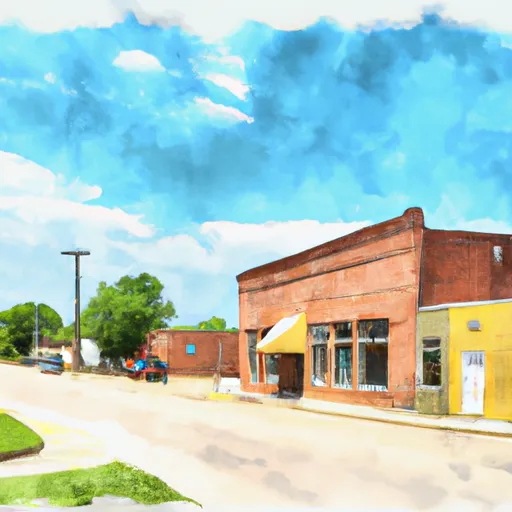-
 Snoflo Premium
Snoflo Premium
Get unlimited access to all our content
With no Ad interruptions! - Start Your Free Trial Login with existing account
Burden
Eden Index
Climate
8.3
•
Recreation
2.0
•
Community
1.8
•
Safeguard
4.4/10

Burden, Kansas is a small town located in southeastern Kansas. The climate in Burden is characterized by warm summers and chilly winters, with an average annual temperature of 57°F. The hydrology constituents of the town are heavily influenced by the nearby Walnut River, which provides a source of water for the town and surrounding agricultural areas. Outdoor recreation opportunities in Burden include hunting, fishing, and camping at the nearby Kaw Wildlife Area and the Flint Hills National Wildlife Refuge. The area is also popular for hiking and nature watching, with several scenic trails and viewing areas located throughout the region. Overall, Burden offers residents and visitors a tranquil setting and plenty of opportunities to enjoy the natural beauty of Kansas.
What is the Eden Index?
The Snoflo Eden Index serves as a comprehensive rating system for regions, evaluating their desirability through a holistic assessment of climate health, outdoor recreation opportunities, and natural disaster risk, acknowledging the profound impact of these factors on livability and well-being.
Climate Health Indicator (CHI): 8.3
Burden receives approximately
927mm of rain per year,
with humidity levels near 81%
and air temperatures averaging around
14°C.
Burden has a plant hardyness factor of
6, meaning
plants and agriculture in this region thrive during a short period during spring and early summer. Most
plants will die off during the colder winter months.
By considering the ideal temperature range, reliable water supplies, clean air, and stable seasonal rain or snowpacks, the Climate Health Indicator (CHI) underscores the significance of a healthy climate as the foundation for quality living.
A healthy climate is paramount for ensuring a high quality of life and livability in a region, fostering both physical well-being and environmental harmony. This can be characterized by ideal temperatures, reliable access to water supplies, clean air, and consistent seasonal rain or snowpacks.
Weather Forecast
Streamflow Conditions
Arkansas - Keystone
Area Rivers
Arkansas - Keystone
Snowpack Depths
Arkansas - Keystone
Reservoir Storage Capacity
Arkansas - Keystone
Groundwater Levels
Recreational Opportunity Index (ROI): 2.0
The Recreational Opportunity Index (ROI) recognizes the value of outdoor recreational options, such as parks, hiking trails, camping sites, and fishing spots, while acknowledging that climate plays a pivotal role in ensuring the comfort and consistency of these experiences.
Access to outdoor recreational opportunities, encompassing activities such as parks, hiking, camping, and fishing, is crucial for overall well-being, and the climate plays a pivotal role in enabling and enhancing these experiences, ensuring that individuals can engage in nature-based activities comfortably and consistently.
Camping Areas
| Campground | Campsites | Reservations | Toilets | Showers | Elevation |
|---|---|---|---|---|---|
| Meeker Lake | None | 923 ft | |||
| Osage Cove - Kaw Lake | None | 1,123 ft | |||
| Sarge Creek - Kaw Lake | None | 1,052 ft | |||
| Pawnee Lake | 5 | 879 ft | |||
| Washunga Bay - Kaw Lake | None | 1,022 ft | |||
| McFadden Cove - Kaw Lake | None | 1,025 ft | |||
| Bell Cow Lake and Equestrian | 60 | 928 ft | |||
| Stroud Municipal Lake | None | 866 ft | |||
| Prague City Lake | None | 910 ft | |||
| Jim Thorpe Park | None | 912 ft |
Catastrophe Safeguard Index (CSI):
The Catastrophe Safeguard Index (CSI) recognizes that natural disaster risk, encompassing floods, fires, hurricanes, and tornadoes, can drastically affect safety and the overall appeal of an area.
The level of natural disaster risk in a region significantly affects safety and the overall livability, with climate change amplifying these risks by potentially increasing the frequency and intensity of events like floods, fires, hurricanes, and tornadoes, thereby posing substantial challenges to community resilience and well-being.
Community Resilience Indicator (CRI): 1.8
The Community Resilience Indicator (CRI) recognizes that education, healthcare, and socioeconomics are crucial to the well-being of a region. The CRI acknowledges the profound impact of these elements on residents' overall quality of life. By evaluating educational resources, healthcare accessibility, and economic inclusivity, the index captures the essential aspects that contribute to a thriving community, fostering resident satisfaction, equity, and social cohesion.

